 This nearly perfect volume features a collection of invited contributions focused on the application of mathematics in naval engineering. Advocating for a more integrated approach that surpasses traditional scientific boundaries, leading experts present interdisciplinary tools and models across a wide array of topics. Each chapter highlights key methods, emerging research directions, and applications of analytical techniques within the field.
The book explores fundamental scientific and mathematical concepts as they relate to subjects such as the butterfly structure of the FFT, the acoustic impedance of pistons in a two-layer medium, deterministic batch trackers, spline equations, moving horizons estimation, membership games for sensor network planning, statistical models for inertial sensors, random flight searches in confined domains, the acoustics of mixed porosity felt airfoils, and an innovative aft boundary condition for towed flexible cylinders.
Rigorously peer-reviewed and thoughtfully presented for a diverse audience, this volume is ideal for graduate and postdoctoral students engaged in interdisciplinary research. Researchers in applied mathematics and the sciences will find this book to be a valuable resource, showcasing the latest advancements in the field. In line with the STEAM-H series, this volume aims to foster interdisciplinary understanding and collaboration.
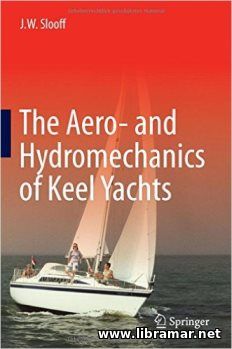 All intended readers will definitely find that the present volume is not a sort of books with glossy images of fabulous and glamorous yachts. It is much more scientific and sober than those titles. The main objective of the compilers of the present training course was to provide all interested readers, and yachtsmen in particular with the racing ambitions with a good technical background of the mechanics of sailing, including both hydro- and aeromechanics.
The original intention of the author of the volume was to present all materials in a way that could be justifiable from his own background, while all efforts have been made to keep the content easily accessible for the people without actual academic schooling. The book starts with a list of used notations and symbols followed by the introductory chapter.
Then the main content of the publication comes arranged in several sections covering the geometry of the sailing yacht and mass properties, basic mechanics and fundamental elements of the fluid mechanics, forces acting above the surface of the water, i.e. aerodynamics, and forces acting under the water, i.e. hydrodynamics, sailing hydrodynamics and aerodynamics, retrospection. Several appendices are there at the end of the volume providing some valuable additional information on mathematical notions, Kelvin ship waves, and other important aspects.
 The content of the present excellent book is mainly based on the reviewed and updated information of this edition. The volume has been prepared by the award-winning author of many other naval architecture books and former VP of RINA. The book will be ideal for the people making their first steps in the subject an also for those willing to refresh their technical knowledge.
The title will provide all of them with a remarkably broad appreciation of naval architecture explaining the theory in physical terms without submerging the readers too deep into the mathematics. The author have covered all basic principles of naval architecture and has also addressed the contemporary fields, such as the design and manufacture using the computer aid, i.e. CAD/CAM. This latest release of the book is reflecting literally all ongoing technical developments and also addresses the international regulations.
The content of the book is very easy to follow and this approach has already made this book very popular among the newcomers. Of course, a proper knowledge and understanding of the basics of naval architecture is critically important not only for them but also to all other people who are working in the marine industry, such as the marine engineers, ship surveyors and crew members, as they all have to possess at least some general knowledge of the subject.
 The present publication is the very good course in naval architecture covering the essential theoretical knowledge required to be possessed by the naval architects. The main objective of the author was to acquaint the trainees with the theoretical basics and provide the clear explanation on their interrelation and progressive application in the ship hull design. Note that it should not be looked at as a replacement to any standard reference volume but shall rather be treated as a leading title.
It will be the excellent reference source for the students of the naval architecture. In fact this is a good introduction, as it is clearly stated in the title of the book, and those willing to get a deep understanding and knowledge of the subject, should spend more time and efforts.
The readers will go through the entire process of ship hull design, understand how the main hull characteristics shall be chosen so that the requirements advised by the clients, can be satisfied. The book is recommended to the students and is a perfect supplement to any standard training program. The material is explained in a very simple and understandable way, including all calculations as well as the design matters.
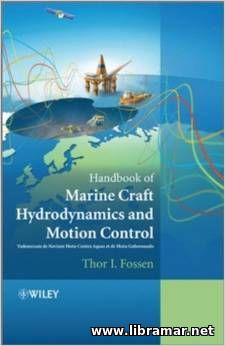 We could all witness the significant progress which took place in the technology of the hydrodynamic modeling and also systems controlling the motion of the marine crafts. The present survey is aimed to include the latest instruments to be used for the design and analysis of the advanced systems of guidance, navigation and also control.
Thor Fossen, the author of this title, has presented lost of valuable materials on both surface and underwater vehicles. Each of the chapters contains the real life case studies and applications providing readers with a very good practical understanding of the design of various control systems.
Among the key features of the present volume we would note a three-part structure that covers the modeling of marine crafts, navigation, guidance and control systems, and finally the appendices - such approach provides all supporting theoretical information in a single volume; we would also mark a coverage of the contemporary methods for the feedback control, numerical methods, and linear/non-linear stability theory, guidance systems, Kalman filtering, navigation systems and so many others. The readers who have already tried this book also mention the matrix mathematics used to build to the comprehensive solutions. In short, one of the best handbooks addressing the subject.
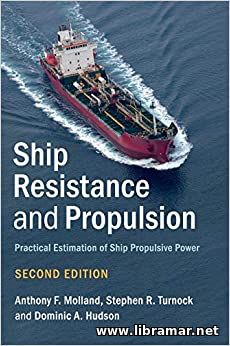 This is the second edition of one of the best books for the naval architects. The publication is covering literally all aspects of the ship hull resistance and ship propulsion. The content of the first release has been significantly reworked with lot of new information added.
The introductory chapter of the volume provides some historical background, followed with the chapter on the propulsive power, where its basic components are addressed, together with the ship power estimate. After that, the reader will get to know about the essential components making the ship hull resistance, as well as the model-ship extrapolation principle.
The model ship correlation is dealt with in a separate chapter. The restricted depth and breadth of the waterway is discussed in the following chapter, with due attention paid to the ship speed trials and the analysis of the data obtained during the trials. Then, there are chapters coming on the measurement of the components of hull resistance, and wake and thrust deduction.
The remaining parts of the book are dealing with such important aspects as resistance design data and numerical estimation techniques, design of the ship hull form and the powering process itself, propeller analysis and many others.
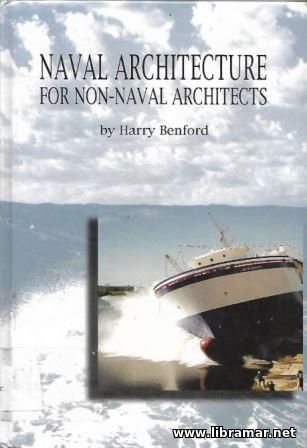 This is definitely the best training source for the non-naval architects willing to be a good idea of the subject of naval architecture, but restricted with time and also not possessing enough technical background. The author provides a truly remarkable coverage of topics, all explained in detail and in a very understandable manner.
The essential concepts of the science of naval architecture have been provided, making this volume the best possible companion for all professionals of the maritime shipping industry who do not have any background and experience as naval architects, but having to discuss technical issues with the professional naval architects from time to time.
The content of the volume is mainly covering two basic areas – ship design and analysis. It should be noted that the technical discussions included in this book are actually qualitative and this approach will make it clear to the readers. Among the topics covered there are structural integrity of the ships, their functional capabilities, and powering demands. The book is highly recommended to everyone who needs to get the essential knowledge and understanding of naval architecture in the shortest possible time.
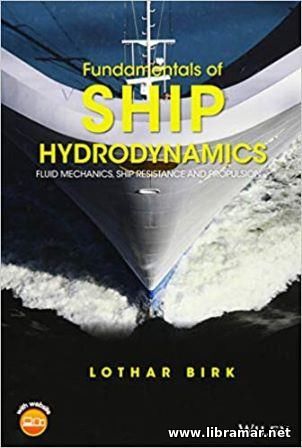 The present title is intended to cover the existing info gap between the ship hydrodynamics and the science of fluid mechanics. It has been written as a sort of textbook to be used by the students of naval architecture, dealing with the ship hull resistance and ship propulsion areas.
The idea was to connect the essential fluid mechanics training with the practical applications of the hydrodynamics, focusing specifically on the day-to-day practice of designing vessels. The estimates of the ship hull resistance have been explained in detail on the basis of the procedures used in the fluid mechanics; all necessary material has been provided in the sixty chapters of the volume.
The entire range of the applications has been covered with the remarkable depth that would enable easy and comfortable self-study process. The text part of the book is supplemented with the numerous figures and data tables. We would definitely treat the present title as the must-read for all students of naval architecture and ship design, as well as the ocean engineering, considering the number of topics covered by the author. It would also serve as an invaluable training and reference source when preparing for the relevant examinations.
|







